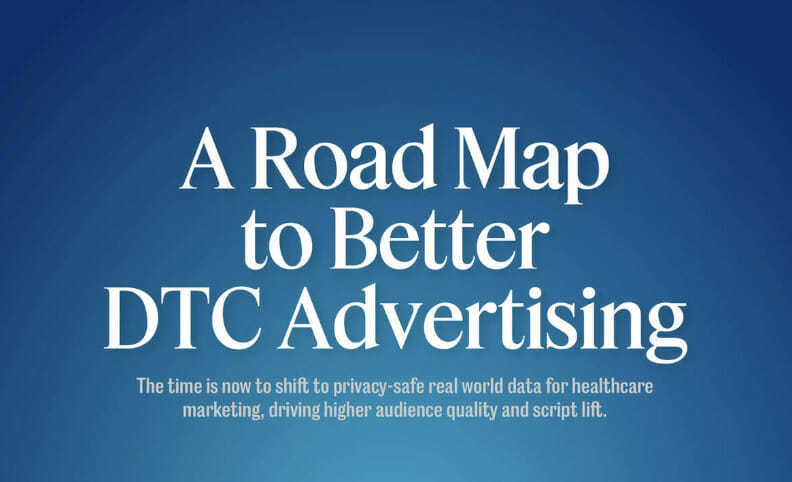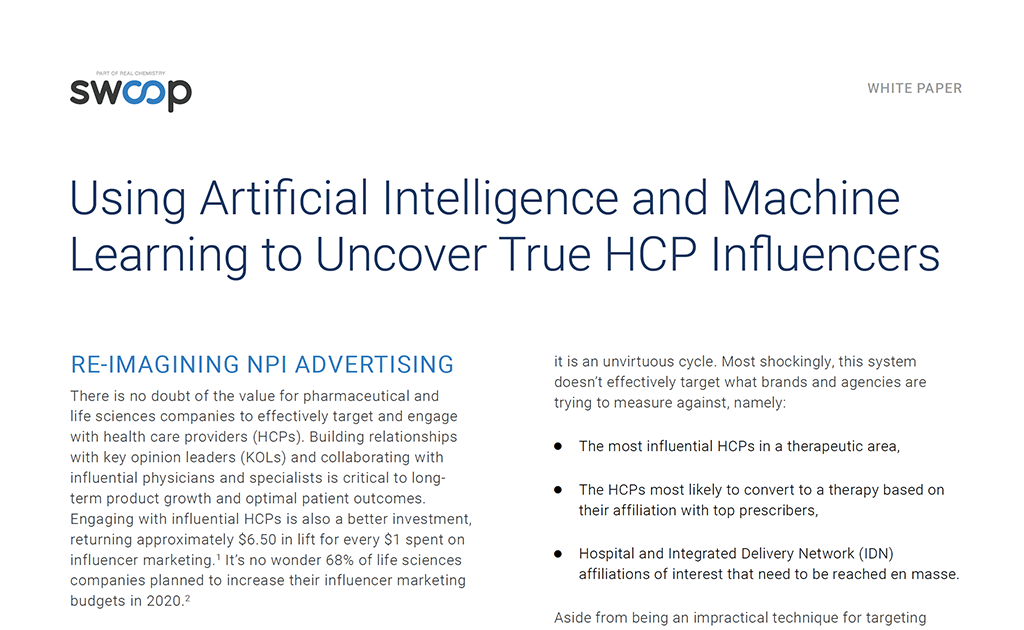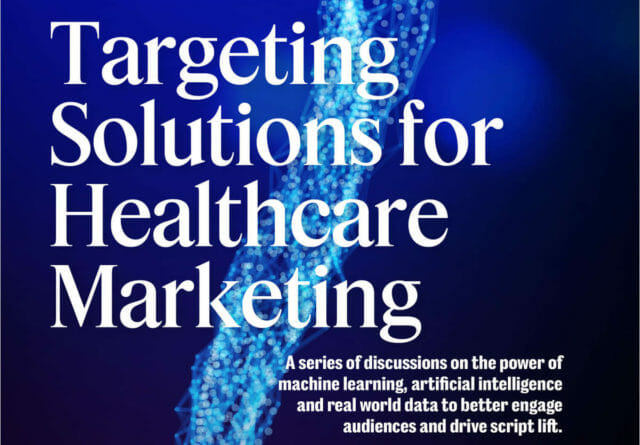Pharmaceutical and life sciences companies currently face forces of change upending and devaluing traditional advertising and promotion strategies. The resulting challenges are further exacerbated by recent privacy-driven platform announcements from Apple, Google and Facebook. Taken together, these macro trends and privacy changes have deprecated legacy targeting methodologies reliant on demographic and clickstream data. By applying machine learning and artificial intelligence to de-identified offline health data, advertisers can develop higher audience quality (AQ) segments for use across the marketing mix — from digital and social media to CTV and linear television.
During a sponsored MM+M webcast, Peter Kane, director of marketing at Swoop, moderated a discussion between Scott Rines, chief revenue officer at Swoop, and Lauren Jacobson, group director of performance acceleration at Initiative, about why legacy targeting approaches fall short and how using real-world data (RWD) for audience building benefits both patients and marketers.
Transforming healthcare marketing
“It is a critical time in healthcare,” Rines said, kicking off the discussion. Changes are happening in “how to reach people” and “collect data.” With increasingly limited access to healthcare providers (HCPs), “[DTC advertising] can play a part in providing valuable information to patients,” he said. “If we take the right path we become great stewards in the industry.”
By way of example, Swoop applies machine learning (ML) and artificial intelligence (AI) to a data universe of 300 million de-identified patients to create custom audiences. Built exclusively for a brand’s specific market definitions and core therapeutic advantages, each audience “is specific for a specific campaign and is never used again.”
Getting “closer to the target instead of that spray and pray [approach], is very important when it comes to digital,” Jacobson added. The goal is “to reduce all that waste and get in front of the right person.”
New methods are critical when, for example, iOS (Apple) users are “asked if they want to be tracked and almost 90% are saying no,” said Rines. Facebook, too, “can no longer track on other sites” and “is moving away from interest targeting.” At the same time, “data collection is changing,” he continued, with the introduction of state bills “to clamp down on how people target patients,” which could potentially “prevent [industry] from getting the right message to the right customer who really needs our help.”
To Jacobson, “owning your first-party data” presents a unique challenge for pharma. “We can’t ask our consumers who haven’t even been diagnosed to sign up so I can message you as a marketer,” she said. As a result, marketers have to “rely on larger spheres of databases to be privacy safe.”
Targeting with real world data
When identifying RWD sources, Rines explained, “HIPAA-compliant is the entry point.” In addition, Network Advertising Initiative (NAI) membership indicates “you are compliant with not only how you collect your data but also how you use it for targeting,” and as a result, helps “protect our industry and our livelihood in the digital ecosystem.”
With organizations like the NAI, Jacobson added, “it’s possible to rise above all that clutter, synthesize it, make it understandable for marketers, advertising agencies and different companies, and then help police it.” When “bringing healthcare information with ID-based information,” it’s important “to think of the consumer first and make sure that everything is privacy-safe.”
At Swoop, Rines explained, “we take a safe approach to how we build these audiences” by starting “at a point of ignorance.” Specificity “changes the size and scope of the audience” so that “you become much more efficient in your spend” and “give a relevant message to a patient,” he added.
When a new drug comes to market, Jacobson said, “we work with a client to understand the diagnosis and procedure codes” so that “we can share with partners such as Swoop the very specific nuance audiences we’re looking to find in the real world.” The next step is “to layer in similar audiences to a lot of different media” to “manage reach and frequency and start thinking about a campaign more holistically,” she explained.
Building quality audiences
With all the changes, Rines said, “if you’re collecting data online, you’re going to lose your signal.” Yet, companies “working with data providers that have offline data” who are HIPAA-certified and NAI-compliant “will not be affected.”
It is critical for “every single marketer to take a look at how they are targeting consumers” and “to make sure that cookies are not a part of that puzzle,” Jacobson said. “Think more privacy-safe ID-based, opt-in solutions that help that closed loop measurement.”
Remember to “do the homework and know that things will change,” she added. More importantly, “always have backups in mind.”
To Rines, “audience quality is the gold standard in pharma.” Why? Essentially because it says “that this person has or likely has the condition.” Then, “how high you can build that” — which should “not [be] over 50%,” he said — helps “prevent re-identifying the patient.” In the end, “you’re spending your dollars more wisely because you’re getting your message in front of people who are more likely to have the condition,” he continued.
Which is important because “there’s such a correlation between getting in front of the right consumer and people getting on script,” said Jacobson.
“We have the ability to solve a lot of problems” as long as “we do it in a way that puts the patient first,” concluded Rines. That means “not re-identifying them and actually adding to their life by providing information that can really change their life.”










